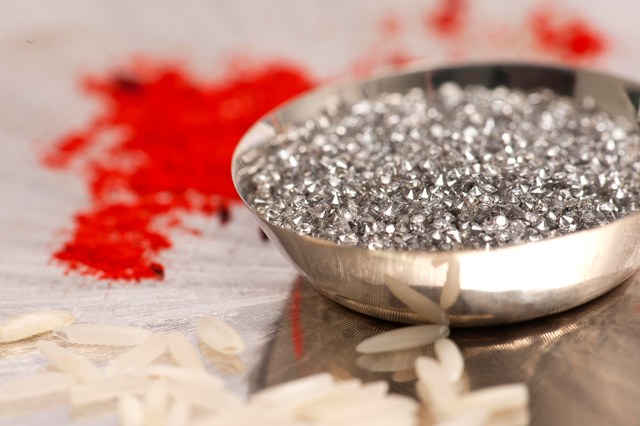More than a decade after De Beers relinquished control of the diamond sector, the major diamond miners are looking at forming a new industry association to co-operate on common issues, such as generic marketing of diamonds, undisclosed synthetics, and industry research.
Bloomberg reported in February that eight producers had a confidential meeting, organized by Rio Tinto (NYSE: RIO; LSE: RIO) and Alrosa (RTS: ALRS), to discuss the topic. The meeting, which took place at Rio Tinto’s London headquarters, also included De Beers, Dominion Diamond (TSX: DDC; NYSE: DDC), Lukoil (RTS: LKOH), Petra Diamonds (LSE: PDL), GEM Diamonds (LSE: GEMD) and Lucara Diamond (TSX: LUC).
“What they’re trying to create, the industry should have done a long, long time ago — the same as the platinum guild and the gold bourse and everything else,” says William Lamb, president and CEO of Lucara Diamond, who attended the meeting.
“It’s a forum I think for discussion of where the industry is going as a whole.”
While he could not talk specifically about what happened at the meeting, Lamb agreed to discuss some of his views on a potential association and some of the issues a producers’ group could address.
Lamb sees the association as a chance to shed light on the sometimes mysterious workings of the diamond sector: “I think the primary goal of the association has to be to enhance transparency of the industry as a whole.”
Details of the meeting were not disclosed, but participants did confirm that marketing, undisclosed synthetic diamonds, and industry research were discussed. In an email to Bloomberg, Rio Tinto explained that the producers discussed the need for an association, which would promote the interest of diamond producers and the sector in general.
In response to a request for comment, a Dominion Diamond spokesperson in April said the discussions were still early stage and no agreements have yet been reached.
“Preliminary discussions have been held between a number of producers to explore the potential remit and scope of an industry association for diamonds that would seek to better understand, address and protect the needs of diamond consumers,” the spokesperson said in an email.
The major players have talked about forming such an association before. Whether or not the idea sticks this time around, it’s clear that some collective action on the part of the producers could benefit the industry.
“An industry association makes sense to tackle synthetics,” said Des Kilalea, a mining analyst with RBC Capital Markets.
“The association might also look at the benefits of some generic advertising to boost diamond jewelry’s share of luxury spending,” he added.
Competition from other luxury products was one of several big challenges facing the diamond industry that De Beers outlined in its inaugural Diamond Insight Report last year.
While demand for diamonds is growing and supply is expected to decline after 2020, diamond miners can’t take demand for granted.
“De Beers’ Diamond Insight Report last year showed that growth in demand for luxury jewelry was well below that of electronic gadgets, fine wines, accessories etc., in the period 2004-2013.” Kilalea noted.
Advertising spending on diamond jewelry has fallen over the past decade relative to other luxury categories. Meanwhile, demand for luxury jewelry in the U.S. grew at just over 2% between 2004-2013 while demand for high-end, high-tech gadgets grew at 14% a year.
Also consuming a lot of consumers’ discretionary spending — at the expense of luxury items such as jewelry and designer handbags — is travel, says Lucara’s Lamb.
As opposed to cruise, vacation and other travel companies, which spend a vast amount of money on advertising, there is really no generic marketing for diamond jewelry. An association could help with a coordinated strategy to nurture demand — especially with younger consumers who are less enamoured with diamonds than previous generations.
Before De Beers launched its supplier of choice strategy in 2000, the diamond giant spent $150-200 million a year on advertising and marketing — much of that generic. It’s now spending about $100 million on branded advertising for its Forevermark brand.
Synthetics
In the past few years, there have been increased reports of synthetic diamonds being mixed in with natural diamonds in an attempt to pass them off as natural, another issue that the diamond miners discussed.
However, Lamb says the industry is generally on top of the synthetics issue.
De Beers has developed technology to detect synthetics, which it has shared with the wider industry. Machines that can detect synthetics can be easily bought for anywhere from $2,000 to $30,000, and qualified jewellers will have their own machines.
In addition, synthetic production is a tiny proportion of mined production — around 50,000-70,000 carats compared to 130 million carats a year, Lamb says.
“It’s a very small percentage when you compare the two, which is actually creating a massive issue — and it’s not the fact that it’s undisclosed, it’s what it does to consumer confidence, in my opinion.”
Still, more could be done to weed out undisclosed synthetics and to reassure consumers that their jewelry is authentic.
Lamb adds that the liquidity problems in the diamond sector at the end of 2014 were because of undisclosed synthetics — not to the Antwerp Diamond Bank’s September announcement that it was withdrawing from the sector.
Because of the fear of undisclosed diamonds, lenders insisted on GIA certificates for diamonds as small as 0.2 carat — creating a backlog of up to six months.
“If you look at how people finance diamonds, the bank will not give a diamantaire money based on the fact that he’s got polished stones,” Lamb explained. “They will loan him money on a receivables invoice — so he actually has to demonstrate that he sold those diamonds. But you can’t sell the diamonds if they’re all sitting at GIA.”
Investment diamonds
A producers’ association would also conduct industry research, and Lamb suggests it could even help develop new markets for diamonds, such as investment.
“Up to forty per cent of gold which is produced ends up in an investment portfolio,” he said. “And yet less than five per cent of diamonds plus 10.8 carats ends up in a portfolio — so less than 1% of production ends up as investment quality stones. There is definitely an opportunity there where we can move more product into the market as investment quality.”
Lucara is particularly interested in this market because its Karowe mine in Botswana accounts for 40% of all stones over 100 carats mined each year while producing only 0.4% of the world’s diamonds.




Be the first to comment on "Diamond producers’ association on the horizon?"